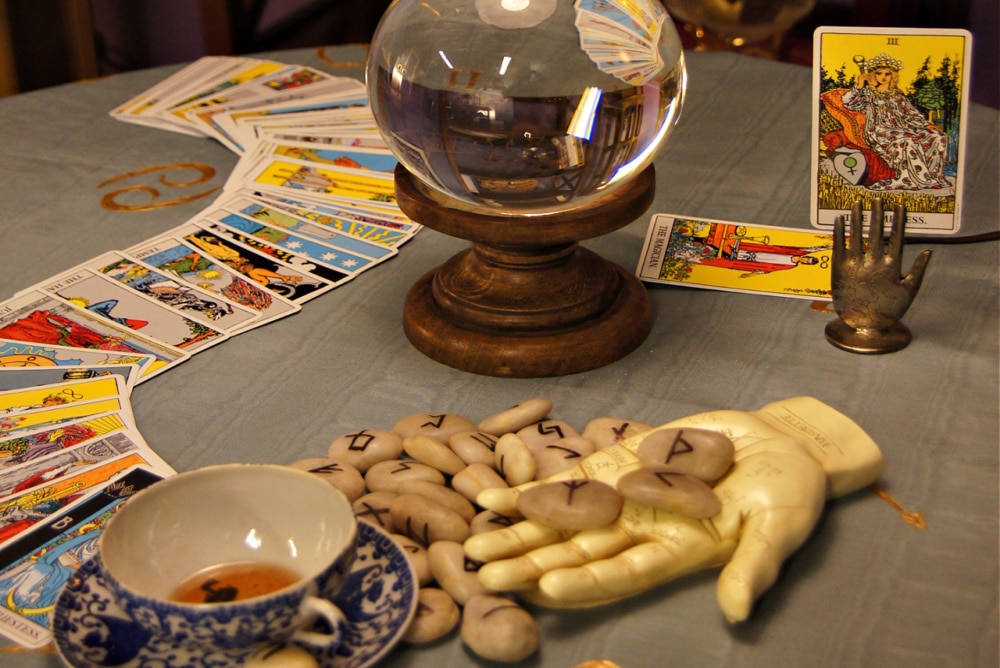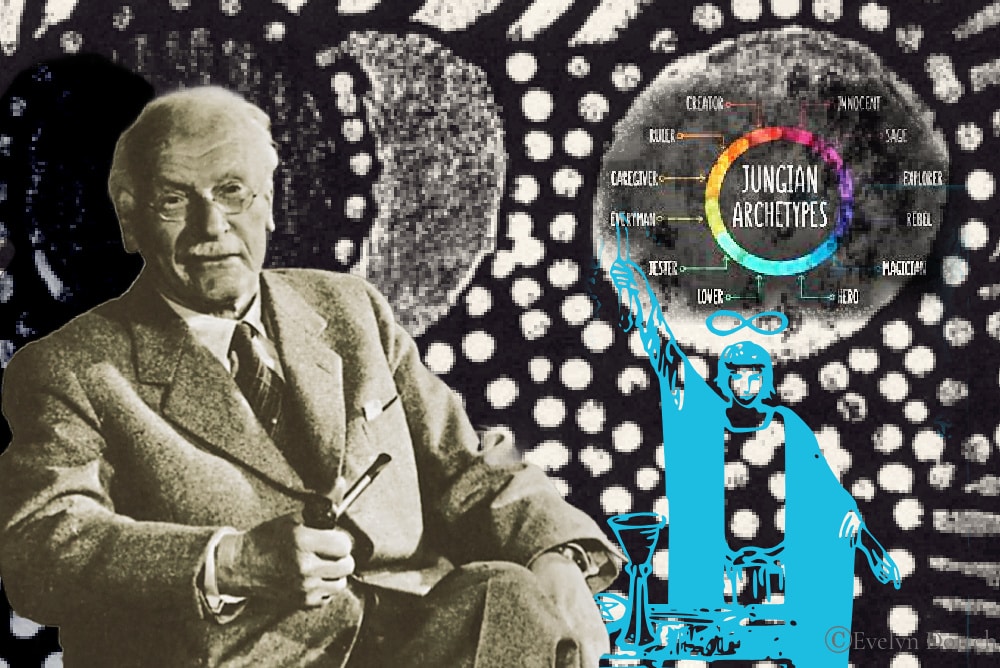Divination is the language of the unseen, a sacred art that has guided seekers, mystics, and visionaries for millennia. It is not a trick of fate or a parlor game. It is the practice of tuning into the wisdom woven into the fabric of existence. Across cultures and centuries, people have looked beyond the veil, using symbols, omens, and intuition to receive messages from the universe, spirit guides, ancestors, and the depths of their own subconscious.
At its heart, divination is about insight, not inevitability. It does not chain us to destiny but instead illuminates the paths before us. By working with tarot, runes, scrying, or other methods, we do not surrender control. We claim it. These tools do not dictate our future; they empower us to step into it with knowledge, awareness, and intention.
Despite the rise of rigid skepticism, divination persists, not because it must prove itself, but because it speaks to something primal within us. It is a bridge between the known and the unknown, a way to access hidden truths and reclaim the wisdom that has always been ours. Whether it’s through the flickering flames of fire scrying, the pull of a pendulum, or the whispers of the cards, divination is an invitation to listen, to see, and to awaken to the magic already within you.
This guide is not here to convince you. It is here to unveil what has always been waiting. We will explore the origins of divination, the power of free will in readings, and the sacred tools that have carried this wisdom through time. If you have felt the call, the path is open. Let’s walk it together.
Fate, Free Will & Divination
Divination is not about surrender. It is not about resigning yourself to fate or accepting some predestined outcome handed down by unseen forces. It is about stepping into your power, claiming your choices, and weaving your own destiny. Every time you engage in divination, you are not asking what will happen. You are asking, what can I do?
The universe is alive with energy, shifting and responding to every decision we make. Patterns emerge, possibilities take form, and the unseen currents of fate whisper their potential. But fate does not bind you. You are not a passive player in your own life. Free will is the fire that allows you to shape the path before you. A tarot reading may warn of storms ahead, but you choose whether to seek shelter, walk through the rain, or conjure the winds yourself.
Divination is not fortune-telling. It is a dialogue between you and the unseen, a sacred act of co-creation. It illuminates crossroads, reveals shadows, and offers guidance, but the power to act remains in your hands. You are not here to be led. You are here to awaken.
This is why divination is feared by those who seek control. It does not create submission; it ignites rebellion. It reminds you that the future is not a single, unyielding road, but a labyrinth of choices waiting for your direction. The cards do not command. The runes do not rule. The flames do not force. They simply reflect what already exists within you, urging you to see, to choose, and to claim what is yours.
If you have come to divination looking for certainty, you will not find it. But if you seek clarity, empowerment, and the strength to carve your own path, then welcome. The wisdom is here. The choice is yours.
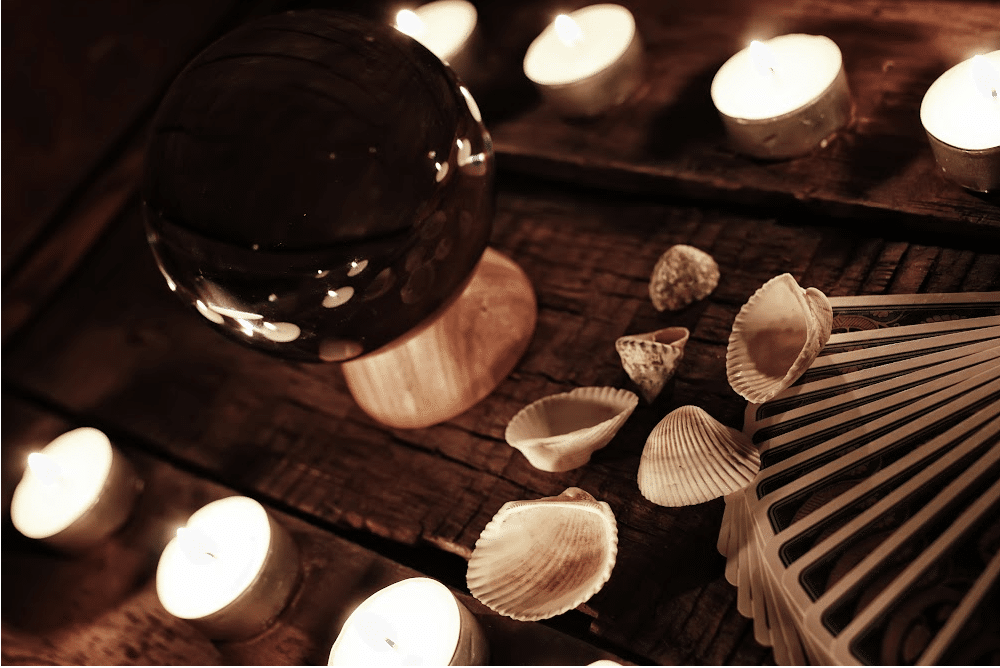
A Brief History of Divination
Divination is as old as human consciousness itself. From the moment humans gazed into the stars, traced patterns in the earth, and sought meaning in the flight of birds, divination has been a way to bridge the known and the unknown. It has shaped civilizations, guided rulers, and whispered secrets to those who dared to listen.
The history of divination is not a straight line, but a tapestry woven through time, crossing cultures and belief systems. It has been revered, feared, outlawed, and resurrected. Through it all, it has never disappeared. Why? Because divination speaks to something primal, something eternal.
Prehistoric & Ancient Times
Before the written word, before temples and cities, there were shamans and seers who interpreted the world through nature’s signs. Early humans believed that spirits communicated through omens, and so they turned to fire, water, bones, and the heavens for messages.
- Bone Casting & Oracle Stones – Some of the earliest forms of divination involved throwing bones or marked stones and interpreting the patterns they formed. This practice, often associated with shamanism, is the ancestor of modern rune casting and cleromancy.
- Celestial Observations – The first astrologers were not reading horoscopes in magazines but tracking the stars to predict seasonal changes, agricultural cycles, and divine messages.
- Dream Interpretation – Ancient civilizations believed dreams were a gateway to other realms. Egyptian priests kept dream journals and trained in the art of dream divination, believing that the gods spoke through visions in the night.
The Oracles & Classical Civilizations
Divination became deeply entwined with power structures in ancient civilizations, where kings, emperors, and warriors sought the counsel of oracles before making decisions that could alter history.
- The Oracle of Delphi – In Greece, the Oracle of Delphi was the most renowned divinatory figure. The high priestess, known as the Pythia, would enter a trance induced by sacred fumes rising from the earth and deliver cryptic prophecies that were interpreted by temple priests. Leaders and warriors traveled far to seek her wisdom, shaping battles, alliances, and entire dynasties.
- Roman Augury – The Romans, pragmatic yet deeply superstitious, relied on augurs who read omens in the flight patterns of birds. A simple direction or behavior of a bird could determine whether an emperor waged war or a new law was enacted.
- Chinese I Ching – One of the most complex and revered divination systems, the I Ching (Book of Changes) dates back to ancient China. Practitioners cast yarrow stalks or coins to generate a hexagram, interpreting its meaning to understand the energies at play in their lives.
The Medieval & Renaissance Era
With the rise of organized religion in Europe, many forms of divination were condemned as heresy, forcing them underground. Yet, as history has shown, repression only drives mysticism deeper into the collective unconscious.
- The Witch Hunts – Tarot, astrology, and other forms of divination were labeled as works of the devil. Women, particularly wise women and healers, were persecuted for engaging in practices that had been part of human tradition for centuries.
- Alchemy & The Occult Revival – The Renaissance sparked a renewed interest in hidden knowledge. Scholars, alchemists, and mystics sought to decode the universe’s secrets through divination, blending astrology, numerology, and the study of Hermetic texts.
Modern Divination
In today’s world, divination is no longer the domain of kings and high priests but a personal tool for self-discovery. The 20th and 21st centuries have seen a resurgence of divination as part of the larger spiritual awakening movement.
- Tarot & Runes in the New Age Movement – The late 19th and early 20th centuries saw tarot rise in popularity, particularly through the work of occultists like Aleister Crowley and the Golden Dawn. The New Age movement further embraced divination as a tool for self-reflection rather than fortune-telling.
- The Digital Age & Online Readings – Technology has brought divination into the modern world. Tarot apps, digital rune generators, and online readings make divination more accessible than ever.
- A Return to the Sacred – While skeptics remain, divination is thriving. Practitioners are reclaiming ancestral traditions, blending ancient wisdom with modern intuition, and using divination as a means of empowerment rather than superstition.
The Enduring Power of Divination
Despite the shifts in culture, the suppression by institutions, and the rise of scientific rationalism, divination has never vanished. It continues to evolve, adapting to new generations and new ways of thinking. But at its core, it remains the same, a sacred conversation between the seeker and the unknown.
History has proven that divination cannot be erased. It is older than empires, older than dogma, older than fear itself. And it will continue as long as there are those who dare to listen to the whispers of the unseen.
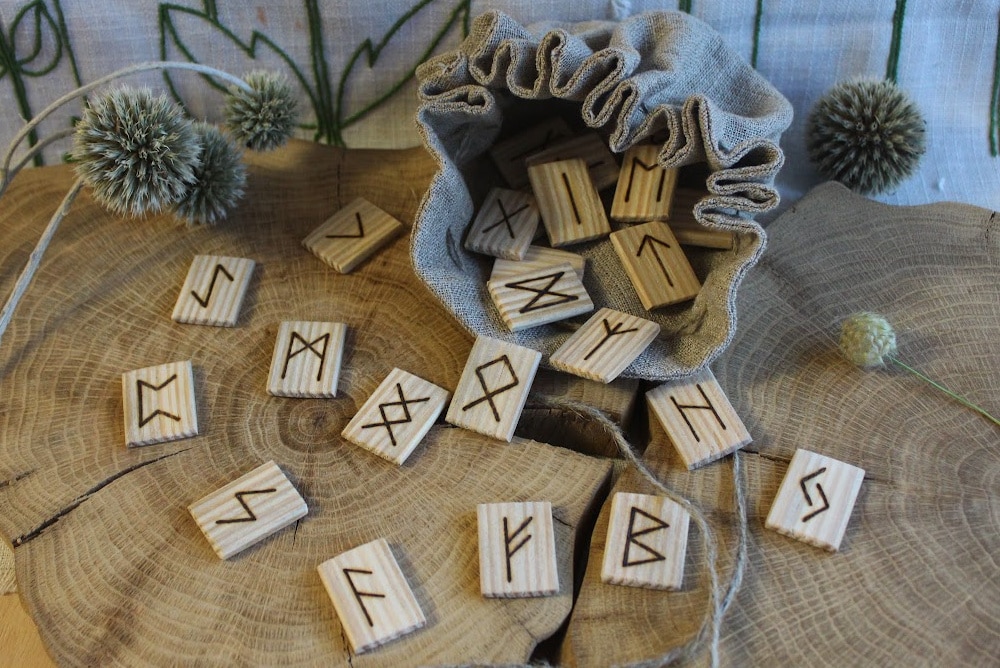
The Role of Symbols & Intuition in Divination
Divination is not simply about reading cards, casting runes, or watching flames dance. It is about understanding the language of symbols, the sacred messages woven into the fabric of existence. The power of divination lies in the interpretation, in the way these symbols connect with the subconscious, unlocking hidden wisdom and deep intuitive knowing.
The Language of Symbols
Symbols have always been the bridge between the seen and the unseen. They appear in dreams, myths, and ancient texts, carrying layers of meaning that transcend time and culture. The human mind responds to symbols instinctively, often without conscious understanding. This is why divination, which relies on these sacred patterns, speaks so deeply to the soul.
- Archetypes – Carl Jung’s concept of archetypes explains why symbols in tarot, runes, and other methods resonate universally. The Fool’s journey through the Major Arcana, the mysterious glyphs of the Elder Futhark, and the shifting images in scrying all reflect the same fundamental human experiences.
- Universal vs. Personal Symbols – While many divination systems have established meanings, intuition plays a role in how these symbols are interpreted. A black cat in folklore may symbolize bad luck, but in a reading, it might be a sign of independence, mystery, or personal transformation depending on the seeker’s relationship with the symbol.
- Sacred Geometry & Hidden Codes – Many divination systems, including numerology and astrology, rely on sacred geometry. Patterns such as the Fibonacci sequence, the Flower of Life, and planetary alignments serve as cosmic blueprints that reveal deeper truths.
Intuition: The True Interpreter
If symbols are the language, then intuition is the voice that speaks through them. It is the inner knowing that allows a reader to see beyond textbook definitions and into the heart of the message being delivered.
- The Difference Between Logic & Intuition – Logic follows a path of reason, deduction, and external validation. Intuition moves in waves, sensing patterns before they are visible, recognizing meaning in what might seem like randomness.
- Tapping Into Intuitive Awareness – Developing intuition is a skill that requires trust, practice, and stillness. Meditation, dream work, and journaling help sharpen intuitive abilities, allowing divination to become a deeper, more personal experience.
- Why No Two Readings Are the Same – Because intuition plays such a vital role, two different readers can pull the same tarot spread or cast the same runes and receive entirely different messages. The subconscious mind and spiritual energy of the reader filter the meaning through personal experience and innate perception.
The Dance Between Symbolism & Intuition
Divination is not about memorization. It is not about rigid meanings. It is about the dance between the symbols and the soul, the interplay of learned knowledge and intuitive revelation.
The runes whisper in ancient tongues, the flames flicker with hidden secrets, the cards unveil the shadow and the light. But none of it means anything without the reader who dares to interpret, who allows intuition to guide them, who embraces the mystery and trusts the message beyond the veil.
This is where divination becomes a true act of power. It is not passive. It is not mechanical. It is a conversation, a sacred exchange, a moment of deep knowing. When you engage in divination, you are not simply pulling symbols. You are speaking to the universe, and it is speaking back.
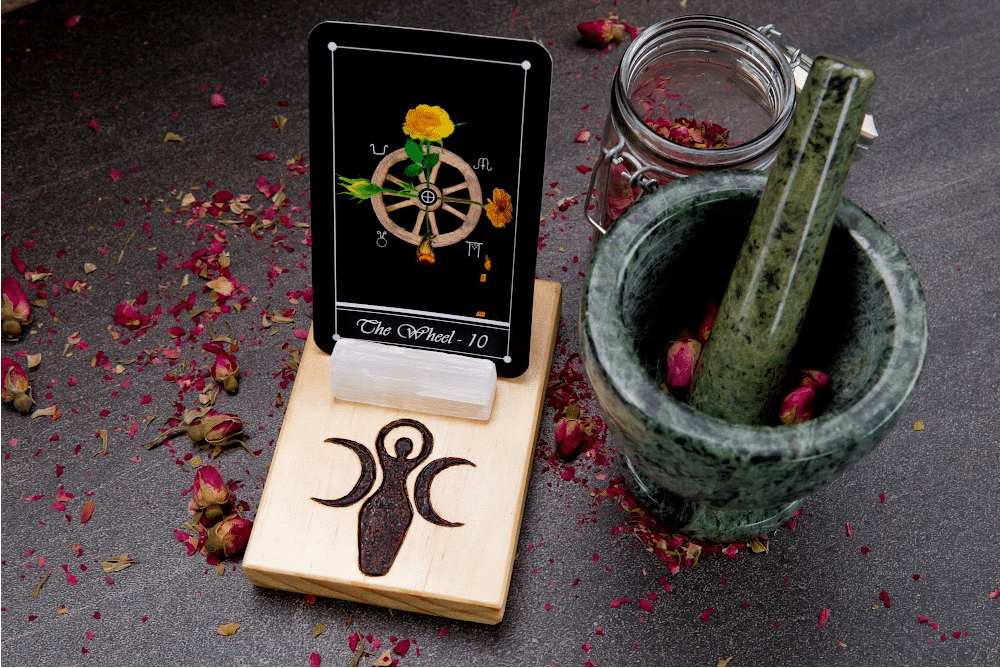
Divination Methods & Their Cultural Roots
Divination is more than a practice. It is a sacred conversation between the seen and the unseen, a whispered truth from the universe to those who dare to listen. Each method of divination carries its own legacy, shaped by centuries of seekers who have turned to these tools for wisdom, power, and transformation. These are not mere parlor tricks or games of chance; they are instruments of insight, mirrors to the subconscious, and gateways to the divine.
What follows is an exploration of some of the most widely practiced forms of divination. This is not an exhaustive list, for the ways of seeking truth are as endless as the souls who seek it. Every culture, every tradition, every lineage holds its own mysteries. Here, we uncover some of the most enduring and potent methods, but the path of divination is yours to walk, and the methods that call to you will be the ones that reveal the deepest truths.
Tarot & Oracle Cards
Tarot is a grimoire disguised as a deck of cards, a map of the soul’s journey encoded in 78 archetypal images. It is a living entity, speaking in symbols that shift and transform based on the energy of the reader and the seeker.
- Origins & Evolution – Born from medieval playing cards and infused with esoteric wisdom, tarot has journeyed through time, whispered through the lips of mystics, and found its place in modern spirituality.
- Major vs. Minor Arcana – The Major Arcana unfolds the grand themes of fate and transformation, while the Minor Arcana reveals the intimate details of daily life, forming a complete narrative of existence.
- Oracle Cards: Free-Form Divination – Unlike tarot, oracle decks are bound by no structure, allowing for more fluid, intuitive readings that channel messages from spirit, guides, or the subconscious.
Runes
Runes are more than an alphabet; they are primordial sigils, charged with the energy of the cosmos. Each rune is a key, unlocking hidden wisdom, carrying the voice of ancestors, and shaping the future through sacred intent.
- The Elder Futhark – The oldest known rune system, consisting of 24 symbols, each a force of creation, destruction, and transformation.
- Casting Runes – Unlike tarot, runes are scattered, not placed. Their positioning, whether upright, reversed, or clustered together, alters the message they bring.
- Runes in Magic – Inscribed on talismans, carved into wood and stone, whispered in spells, runes are both tools of divination and potent symbols of manifestation.
Fire Scrying
Fire is a living spirit, an ever-changing force that reveals its secrets only to those who know how to listen. The ancients saw fire as both a destroyer and a purifier, a bridge between realms that could burn away illusions and illuminate the unknown.
- Origins of Fire Scrying – Shamans, witches, and seers have long gazed into the flames, seeking omens, messages, and glimpses beyond the veil.
- How It Works – The way the flames twist, the embers crack, and the smoke rises all hold meaning, revealing messages to those who can read the dance of fire.
- Personal Connection – Fire scrying is raw, untamed, deeply personal. It demands surrender and trust in the messages the element reveals.
Pendulums
Pendulums are channels of unseen energy, swaying between worlds, responding to the vibrations of the seeker and the spirits who guide them. They serve as conduits between the conscious and the subconscious, translating silent energies into movement.
- History of Dowsing – First used to locate water, then adapted to uncover truths hidden in the ether.
- Yes/No Divination – The pendulum swings, guided by forces both internal and external, answering with clarity beyond words.
- Chakra & Energy Work – Pendulums align with the body’s energy centers, revealing blockages and guiding healing.
Tea Leaf Reading
A cup of tea is more than warmth; it is a portal to messages left by unseen hands. The dregs in the bottom of the cup form patterns that reveal destinies, warnings, and whispers from beyond. This ancient practice invites the seeker to slow down, to observe, and to interpret the images that emerge from the leaves.
- How It Began – An ancient practice, originating in China and spreading like ripples through time, embraced by mystics across continents.
- Symbolism in the Leaves – Each shape, each placement, holds meaning, requiring the seeker to look beyond the obvious into the symbolic.
- A Ritual of Reflection – More than divination, tasseography is an act of presence, a slowing down, a moment of sacred pause.
Bibliomancy
Books are not just words on a page. They are oracles bound in paper and ink, vessels of forgotten wisdom waiting to be rediscovered. Whether a sacred text, a novel, or a book found by chance, bibliomancy reminds us that knowledge is never truly lost. It lingers, waiting to be seen by the eyes that are ready to receive it.
- Ancient Practice – Used for centuries, particularly with sacred texts, trusting that the universe will guide the hand to the passage meant to be seen.
- How It Works – A question is asked, a book is opened at random, and the answer lies within the chosen words.
- Sacred or Secular? Any book can be a divination tool. What matters is the intent of the seeker and the wisdom of the moment.
Playing Cards
Before tarot, there were playing cards, a humble yet powerful tool for those who knew how to read them. In many traditions, playing cards were a hidden form of divination, passed down through generations and quietly practiced in secret. Though overshadowed by tarot, playing card readings continue to offer profound wisdom to those who understand their language.
- Traditional Playing Card Meanings – The suits align with the elements, each card telling its own fortune.
- Popular Cartomancy Systems – Lenormand, Kipper, and standard playing cards offer structured methods of divination, long used by mystics and fortune tellers.
- A Hidden Legacy – Cartomancy thrived in secret, particularly among women and travelers, who disguised their knowledge within the shuffle of an ordinary deck.
Palmistry
Your hands are not just flesh and bone. They are written scrolls, etched with the lines of fate and free will, telling the story of where you have been and where you might go. The patterns in your palms are unique to you, shifting and evolving as you carve your own destiny. Every line, every mark, every curve holds a message, a fragment of the larger tapestry of your existence, waiting to be read by those who know how to listen.
- Ancient Roots – Found in India, China, and Roma traditions, palmistry has long been used to reveal destiny.
- Lines & Their Meanings – The heart line, head line, and life line weave together the tapestry of one’s path.
- The Hands Change Unlike other forms of divination, palmistry acknowledges free will. Our choices shape our lines, just as they shape our lives.
The Power of Divination Across Cultures
Divination is ancient, primal, ever-evolving. Every culture has its own sacred practices, including bone throwing, shell reading, and dream interpretation, all carrying the weight of ancestral wisdom. It is not superstition. It is not chance. It is a reclamation of power, a sacred knowing, a stepping into the role of co-creator with the unseen.
The methods we have explored are merely doorways. The path of the seeker is to choose which doors to open, which whispers to follow, and which truths to uncover. Whether you find guidance in cards, fire, runes, or the lines of your own palm, divination invites you to see, to listen, and to awaken to the mysteries that have been calling to you all along.
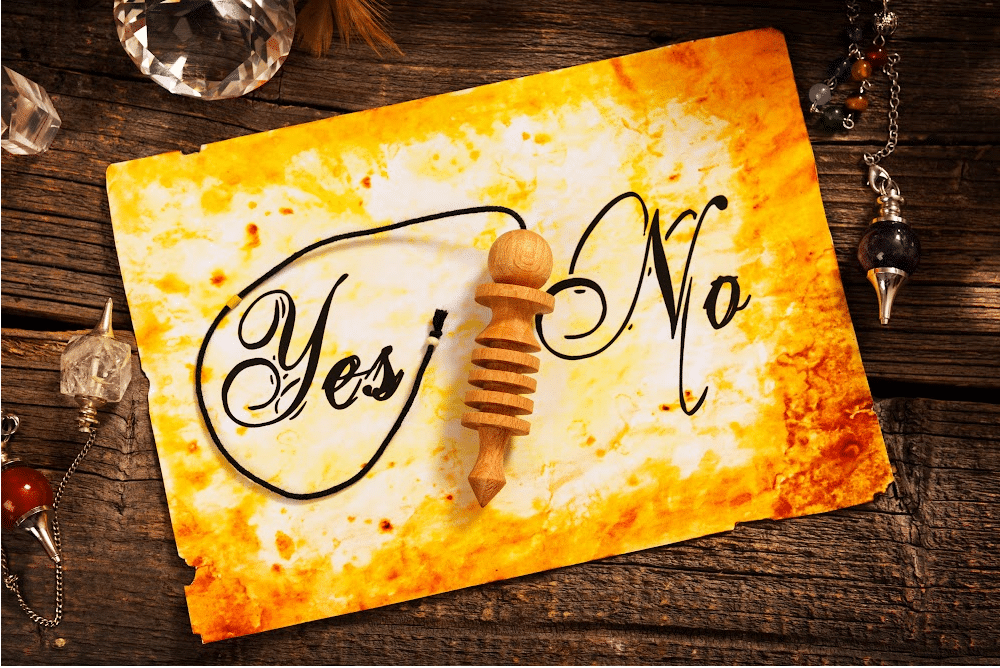
Divination as a Living Tradition
Divination is not a relic of the past. It is a living force, a pulse that beats through time, calling to those who are ready to listen. It has survived persecution, skepticism, and the rigid confines of rationalism because it is more than belief. It is knowing. It is not about passive prophecy. It is about power. The power to see, to choose, to shape destiny rather than submit to it.
Each time a seeker casts runes, shuffles tarot cards, gazes into fire, or consults a pendulum, they are not just performing a ritual. They are awakening an ancient current, stepping into the lineage of those who have dared to seek beyond the veil. These methods are not mere tools. They are keys, unlocking the unseen forces that whisper through symbols, patterns, and intuition.
The tides of the modern world are shifting, and divination is no longer hidden in the shadows. It is being reclaimed by those who refuse to be blind to the unseen, those who trust in their own knowing over the illusions of control. It is not superstition. It is remembrance. It is the echo of ancestors, the language of the soul, and the call of something far greater than logic alone can hold.
Divination does not ask for blind faith. It demands presence, awareness, and the courage to act on what is revealed. Those who answer its call will not find all the answers laid before them, but they will find themselves, more empowered, more aligned, and more connected to the rhythm of the universe itself.
This is not just a practice. It is a summons to the seekers, the visionaries, the ones who refuse to walk in darkness when they could wield the fire of their own intuition. The practice of divination does not endure because it is useful. It endures because it is eternal. It is the thread that weaves through past, present, and future, a dialogue between the seen and the unseen, waiting for those who are ready to listen.
✨ Ready to explore deeper? Follow your curiosity into the world of The Esoteric Cat, where new wisdom and deeper mysteries await. ✨

